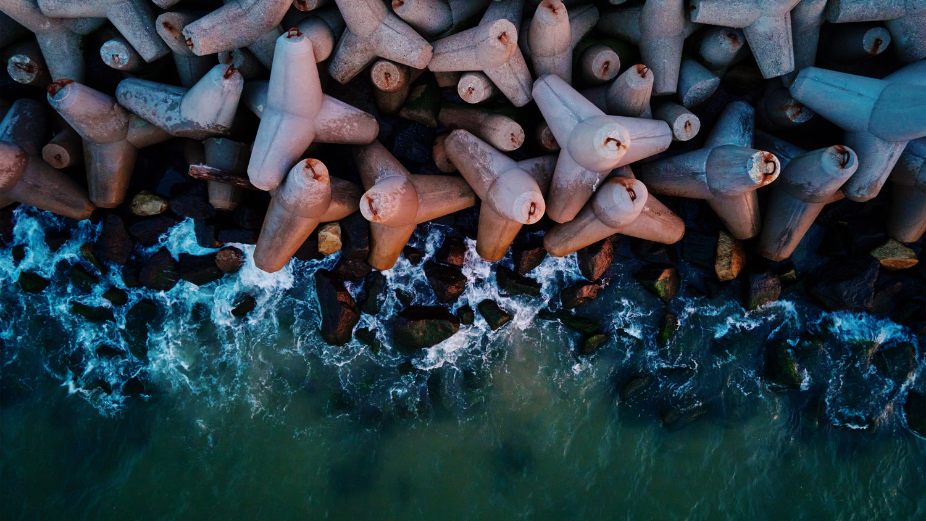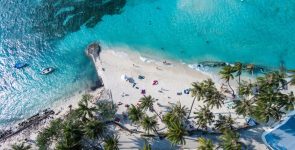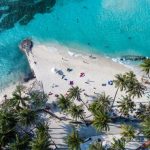
As highlighted in the Maldives Country Climate and Development Report (CCDR) by the World Bank, the Maldives faces significant challenges from climate change, particularly from rising sea levels, coastal erosion, and ocean warming. To combat these threats, the Maldives must adopt effective climate adaptation strategies. The report presents two primary adaptation approaches: hard infrastructure, such as seawalls and breakwaters, and nature-based solutions (NbS), including coral reef restoration and mangrove planting. Each approach has its benefits and drawbacks, and a balanced strategy is essential for safeguarding the Maldives’ future.
Hard Infrastructure: The Conventional Approach
Hard or “grey” infrastructure refers to engineered structures like seawalls, groynes, and breakwaters that protect coastlines from erosion and flooding. This has been the predominant adaptation method in the Maldives, with over three-quarters of the 188 inhabited islands implementing some form of hard coastal protection. Between 2000 and 2016, around 10 km² of land was reclaimed—about 3% of the total land area—primarily to create additional space for housing and economic development.
The CCDR notes that grey infrastructure can be effective in specific contexts, particularly for islands with critical infrastructure and high economic value. For example, Hulhumalé, a reclaimed island near the capital Malé, was developed with future sea level rise (SLR) in mind. The island was raised to approximately 1.8 metres above mean sea level to mitigate flood risks. However, while these measures offer immediate protection, they come with long-term consequences.
The report highlights that hard infrastructure often disrupts natural sediment transport processes, affecting lagoons and coral reefs that are vital for natural island growth and protection. These structures can also lead to maladaptive outcomes, such as the destruction of coral reefs that offer natural protection against waves and storm surges. Once locked into a hard protection pathway, islands may suffer unintended consequences, like increased coastal erosion down-current and the loss of tourism and fisheries resources that depend on healthy coral ecosystems.
Nature-Based Solutions: Working with Nature
In contrast, nature-based solutions (NbS) focus on enhancing natural processes to protect coastlines and mitigate climate impacts. This approach includes restoring coral reefs, planting mangroves, and implementing other ecological practices to build climate resilience. The CCDR indicates that NbS are not as widely adopted in the Maldives as grey infrastructure, but they have shown promise in enhancing both climate resilience and ecological integrity.
Coral reefs and mangroves act as natural barriers, absorbing wave energy and reducing the impact of storm surges and coastal erosion. For example, coral reefs alone provide flood protection services valued at USD 442 million annually, roughly 8% of the Maldives’ GDP. Resort islands have started to experiment with NbS, with around 40% reporting beach nourishment, 15% employing mangrove planting, and about 5% undertaking coral restoration.
NbS have the added advantage of being more sustainable and cost-effective over the long term. They enhance biodiversity, improve water quality, and provide livelihoods to local communities. Additionally, unlike grey infrastructure, which can exacerbate environmental degradation, NbS help restore and preserve natural ecosystems, which is crucial for the tourism and fisheries sectors.
A Balanced Approach: Combining Grey and Green Strategies
The CCDR argues that while hard infrastructure has its place, particularly where immediate protection is necessary, a more nuanced and balanced approach is needed for long-term sustainability. The combination of grey infrastructure with NbS can offer a more comprehensive solution. For example, building seawalls in conjunction with coral reef restoration can provide dual benefits: immediate protection from high waves and long-term resilience through natural accretion processes.
The report recommends a systematic study of the feasibility and unintended side effects of grey infrastructure, alongside further assessment and scaling up of NbS. This strategy would optimise adaptation investments, avoid maladaptive practices, and ensure that island communities are protected while preserving ecological integrity.
Strategic Adaptation Planning
To achieve a balanced adaptation strategy, the Maldives must develop an integrated National Adaptation Plan (NAP) that explicitly incorporates SLR, flooding, and ocean heating scenarios. This plan should guide future spatial and development planning and prioritise island-specific adaptation measures. The CCDR also stresses the need for clear guidelines for island raising and land reclamation to maximise resilience and limit environmental impacts.
A tailored approach that combines grey infrastructure where absolutely necessary and NbS wherever possible will help the Maldives adapt to climate change more sustainably. By investing in these strategies, the Maldives can protect its islands from the adverse impacts of climate change while preserving its natural beauty and ecological health, ensuring a resilient future for its people and economy.













